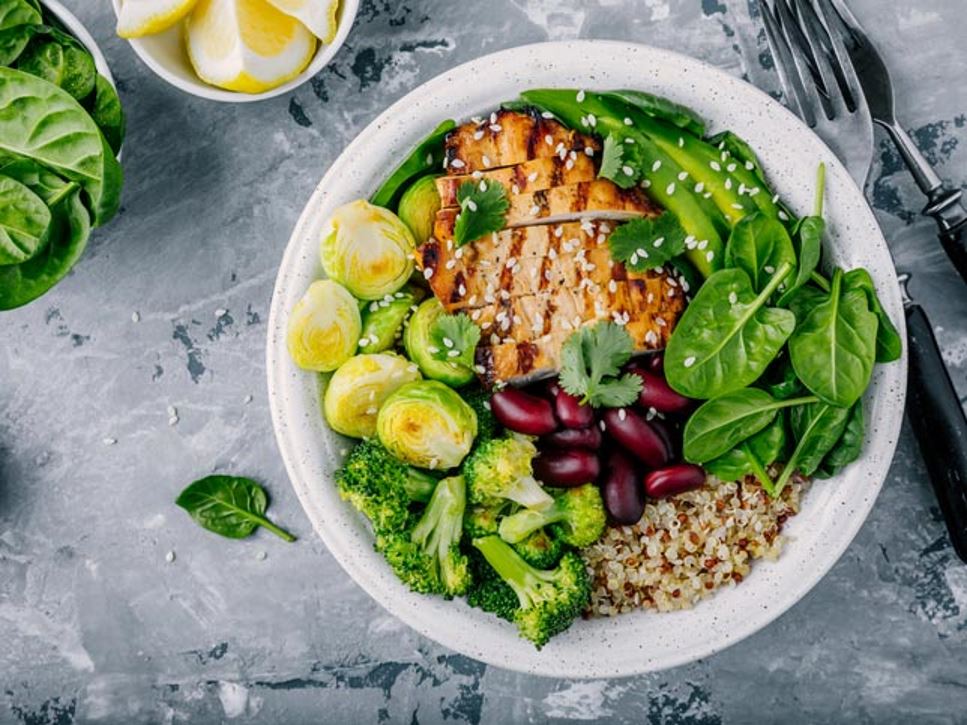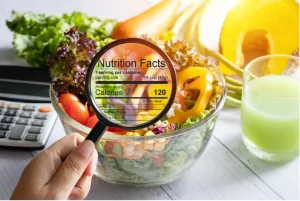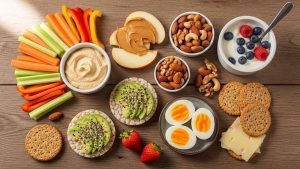Many diets and workout plans promise quick results, but maintaining a healthy weight can be a difficult puzzle. What you eat is important, but how much you consume can be equally as crucial. Here’s where portion control can help. This is a simple approach that involves managing your food intake to match the energy requirements of your body. You can enjoy your favorite food in moderation and avoid overeating by paying attention to the portion sizes. This guide will show you how to use portion control in order to achieve and maintain a healthy body weight over the long term.
Caloric Needs and Your Body Type
Weight management relies on the balance of calories consumed and burned. Each person has an individual daily caloric requirement based on age, gender, and other factors such as weight, height, activity level, height, and weight. You need to eat fewer calories than you use, creating a deficit, in order to lose weight. Your intake and output should be roughly equal to maintain your weight. Understanding your caloric needs is the first step to effective portion control. Calculators online can give you a good idea but are only a start. It is also important to listen to your body’s signals of hunger and fullness.
How to Control Your Portion Size?
You don’t have to carry around a measuring cup wherever you go. You can incorporate several practical, simple strategies into your daily life. Use smaller bowls and plates to trick your brain into thinking you are satisfied with less. Fill half of your plate with vegetables and a quarter of it with lean proteins. The remaining quarter should be carbohydrates. It is also a beneficial idea to read nutrition labels, since the serving sizes listed may be smaller than you consume. You can also portion your snacks into smaller bags rather than eating them directly from the large package. This will help you avoid mindless overeating.
Portion Control and the Mental Aspect
Eating is more than just a physical activity; it is also closely connected with our emotions and habits. Mindful eating encourages you to focus on your food and is an effective tool to help with portion control. It means enjoying each bite and paying attention to the textures and flavors. You should also recognize when you feel full. Eating slowly allows your brain to register, after about 20 minutes, that you are no longer hungry. This can help you avoid consuming more calories. Emotional eating is another issue. Food is often used as a way to cope with boredom or stress. Breaking the cycle of emotional eating can be achieved by finding alternative ways to cope with feelings. For instance, you could consider taking a stroll or engaging in a conversation with a close friend.
Overcoming Challenges and Staying Consistent
Portion control is no different. It’s difficult to adopt a new habit. Restaurant portions can be a challenge since they are usually much larger than you need. You can get around this by asking for a smaller portion, sharing a meal, or setting aside half your meal to take home. Even social gatherings can be a source of temptation. Focus on eating small portions of the treats you love and filling your plate with healthy options. It’s more important to be consistent than perfect. Don’t be discouraged if you have an overindulgent day. At the next meal, simply return to your portion-control strategies.
The Path to Long-lasting Health
Portion control is not just about weight loss; it’s also a lifestyle change with lasting benefits. Managing your portions consistently helps regulate your appetite and improve your digestion. It also stabilizes blood sugar levels. You’ll learn to recognize your body’s signals for hunger and fullness over time. This will lead to a healthier relationship between you and food. This mindful approach will help you make better food choices and enjoy a balanced, healthy diet without any restrictions.
FAQs
1. What’s the difference between serving and portion size?
“Serving size” refers to a standard amount of food. For example, you can locate this on the nutrition label. A “portion” refers to the amount of food that you choose at a given time. It can be greater or smaller than a standard portion size.
2. Can I eat my favorite foods while practicing portion control?
Absolutely. Portion control does not mean depriving yourself. As long as you keep track of the calories you consume and stick to your daily goals, you can eat whatever you want.
3. How can I manage my portion size when eating in a restaurant?
The portions at restaurants are usually oversized. This can be avoided by ordering a takeout box and immediately putting in half of your meal. You can also choose to share an entree or order a smaller portion.
4. Do I have to measure out my food forever?
In the beginning, measuring your food is a good way to learn what portions are appropriate. You’ll become more adept at visualizing portion sizes and won’t have to measure as much.
5. What if I feel hungry even after eating the controlled portion?
Wait about 20 minutes before eating again. This will allow your brain to register that you are full. A glass of water may also be helpful. Add more fiber-rich veggies or lean proteins to your meals if you are constantly hungry. They can make you feel satisfied for a longer period of time.



